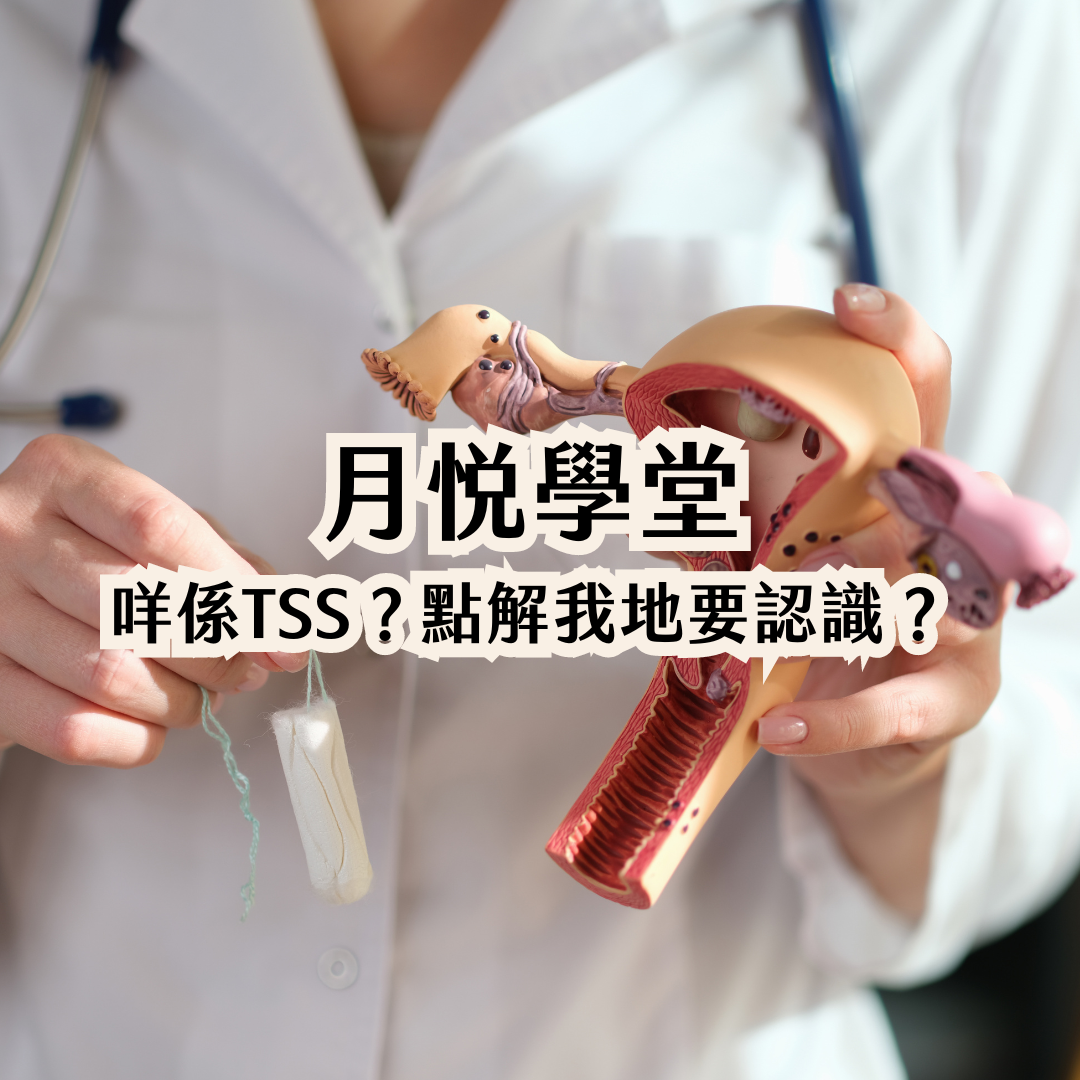
About TSS (Toxic Shock Syndrome)
Share
What is TSS?
TSS(Toxic Shock Syndrome) is a rare but life-threatening health condition to ALL SEXES. It is commonly caused by the infection of streptococcus pyogenes (S. pyogenes)or staphylococcus aureus (S. aureus) and its release of toxins into the bloodstream. Common symptoms like high fever, headache, fainting, muscle pain, vomiting, lower abdominal pain, diarrhea, rash, low blood pressure, or even shock may occur after infection.
Cause of TSS
Menstrual toxic shock syndrome (MTSS) is mainly caused by the production and intrusion of toxic shock syndrome toxin-1(TSST-1) due to the colonization of S. aureus inside vagina, leading to an immune system disorder or other complications. Research reveals that young women under 20 without carrying required antibodies are the most susceptible group. Apart from vagina, S. aureus can also be found in the oral and nasal cavity, human skin, or even axilla. Unless a significant amount of a specific toxin is produced and intruded into the bloodstream without being neutralized by antibodies, infection and complications would not happen.
Tampon and TSS
Though TSS has long been considered in association with tampons, researchers support that tampons themselves not only do not produce toxins causing infections, but also can inhibit the production of S. aureus and TSST-1 significantly in the presence of various tampon fibers. However, as the introduction of oxygen favors the production of TSST-1, while both menses and tampons carry oxygen, using tampons during menstruation do increase the oxygen level inside the vagina. The change of pH level during menstruation and the absorbing property of tampons further provide an environment for S. aureus colonization and TSST-1 production.
Nevertheless, the relation between tampon and mTSS infection is still uncertain. The medical field believes high absorbency is the highest risk factor to mTSS infection, and it is believed that shortening the usage time of tampon can reduce the production of S. aureus. Therefore, it is recommended to always use a low-absorbance tampon and to avoid using one single tampon consecutively over 8 hours. One should also stop using tampons when the menstrual flow becomes low.
Menstrual cup and TSS
Apart from tampons, researchers support also that menstrual cup themselves do not produce toxins causing infections. Commonly used materials like silicone and TPE are also not favoring the production of S. aureus. However, menstrual cups introduce oxygen into the vagina and increase the oxygen level during insertion. The menses collected by menstrual cups also favors the production and colonization of S. aureus. Therefore, just like tampons, a smaller cup is recommended to reduce the amount of oxygen introduced. Regular removal for cleaning and sanitizing is also required.
Limitations
Women’s health(especially menstruation) has always been seen as less priotized topics. The stigmatization of menstruation further makes women less willing to or delay seeking medical help and refuse to participate in research, making sampling more difficult.
Therefore, there are still many uncertainties regarding the TSS, like whether antibody level relates to races, why young women would have a higher infection rate even they have similar level of antibodies comparing to adults, why would there be recurrence even when recovered patients have stopped using intertive menstrual products, what are the differences in infections among menstrual cups, menstrual disc and tampons, etc. Even the diagnostic criteria of TSS is still a debatable topic.
Scholars and groups have been globally advocating for more research and regulations on menstrual health and product safety. Laymen like us can also help create a menstrual positive atmosphere by discussing and sharing more about menstruation with others, so that the professionals can understand that menstruation is worth and needs more emphasis on. Users should also be aware of their own health conditions during menstruation, no matter using any product, and seek medical help whenever needed.
Suggestions
mTSS infection could happen while using any kind of menstrual products or contraceptive implants. Even so, the number of reported cases of mTSS infection has decreased to a similar level to non menstruation related TSS cases in the past decade, while most mTSS cases are caused by improper usages like using high-absorbency products when the flow is low, or using one single product consecutively for too long. These could make the vagina become too dry and wounds, which would elevate the risk of infection. As there is a risk of recurrence, recovered patients should seek medical advice before using any menstrual products.
We recommend the followings to minimize the chance of infection:
- Read carefully and strictly follow the instructions before using any menstrual products or insertive contraceptive products;
- Always be aware of your own body condition, especially when you have had wounds and are using menstrual products or insertive contraceptive products. Stop using such products immediately (if possible) and seek medical help if you experience a sudden change in smell or texture and colour of your discharge/cervical fluid, vaginal itch or irritation, high fever, diarrhea, vomiting, fainting, rash or any other kinds of symptoms during your period or shortly after.
- Wash your hands thoroughly before using menstrual products and insertive contraceptive products;
- Trim your nails before using any insertive products to avoid scratching your vagina and increase the risk of infection;
- Sanitize your menstrual cup / menstrual disc thoroughly before your first use and after the final use in your period.
- Change a new tampon every 4-8 hours;
- Empty and clean your menstrual cup / menstrual disc at least once every 8 hours;
- Empty and clean your menstrual cup / menstrual disc or change a new menstrual product before sleep and after wake up;
- Do not leave any menstrual product inside your body over 12 consecutive hours;
- Avoid using products with high absorbency or volume rating without actual need. Always choose a product with lowest absorbency or volume rating possible during your period;
- Stop using any insertive menstrual products after your period ends;
- Do not use insertive menstrual products without medical advice if you have suffered from TSS before.


